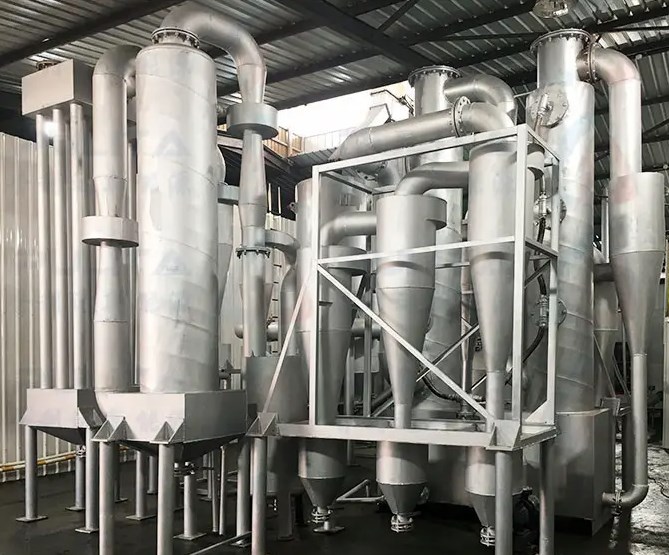Biomass gasification means that biomass gasification raw materials (such as straw, wood chips, rice husks, etc.) are pressed into shape or processed by simple crushing and drying, and then sent to a gasifier for gasification and cracking under oxygen-deficient conditions. That is, under certain thermodynamic conditions, with the help of some air (or oxygen) and water vapor, the high polymer of biomass undergoes pyrolysis, oxidation, reduction, and reformation reactions, and the tar associated with pyrolysis is further thermally cracked or The process of catalytic cracking into small molecular hydrocarbons, obtaining combustible gas containing CO, H2 and CH4 and purifying to obtain product gas.
Application of biomass gasifier and biomass gas
Biomass gas is to convert biomass raw materials into biomass combustible gas through high temperature gasification in a biomass gasifier, which can be used in steel kilns, glass kilns and ceramic kilns instead of fuel oil or natural gas.
The quality of biomass gas is basically the same as the current industrial coal-to-gas (water gas), but the dust content and tar content are low.
Biomass gas is a very clean living and industrial fuel. Unpurified biomass gas fuel can be directly transported through pipelines and applied to steel bar heating furnaces, copper smelting reverberatory furnaces, crucible boilers, industrial boilers, cement rotary furnaces and refractory furnaces. Material tunnel kiln and other industrial kilns with low fuel quality requirements; after purification processes such as dust removal and coking, its application range can be extended to ceramic kilns, glass kilns, hot blast stoves and power plants and other industries with high fuel quality requirements on the kiln.
Post time: Apr-07-2022

